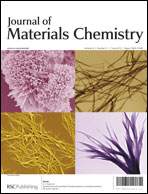The modification of the poly(dimethylsiloxane) (PDMS) surface for improved wettability and biocompatibility has been a hot topic for its biological applications. We report here a facile biocompatible approach for PDMS modification by L-3,4-dihydroxyphenylalanine (L-Dopa) which renders the change of the PDMS surface from hydrophobic to hydrophilic. Molecular dynamics simulation ascribes the modification process to mainly van der Waals interactions between the PDMS surface and the phenol group of the L-Dopa molecule. The exposed amino/carboxyl groups give rise to the improved hydrophilicity of the L-Dopa modified PDMS surface, which facilitates the subsequent immobilization of collagen. The L-Dopa-collagen modified PDMS surface demonstrates better adhesion, spreading and patterned growth of 293T cells compared with L-Dopa modified PDMS, collagen modified PDMS and native PDMS. The fluorescence images of the 293T cells growing on the L-Dopa-collagen patterned PDMS surface also show good cell growth and activity behaviors which support the biocompatibility of the modification of L-Dopa-collagen on the PDMS surface. The improved wettability and biocompatibility of PDMS surfaces would be beneficial for PDMS applications in biosensors, immunological assays, tissue engineering and so on.

You have access to this article
 Please wait while we load your content...
Something went wrong. Try again?
Please wait while we load your content...
Something went wrong. Try again?


 Please wait while we load your content...
Please wait while we load your content...